From the history of electronic warfare
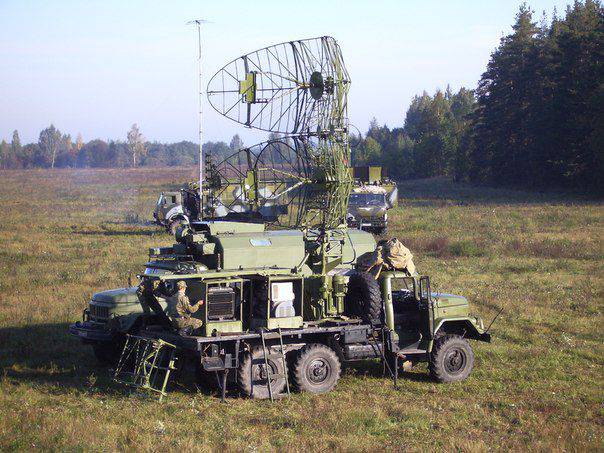
Under the electronic warfare means the conduct of intelligence of the enemy's electronic equipment, the suppression of their work with special radiation (interference), the enemy's disinformation and the protection of electronic systems and their troops from intelligence and suppression.
The ideas of electronic warfare were expressed by the inventor of the radio, the Russian scientist Professor A.S. Popov. In a memorandum to the Russian military department regarding the organization of radio communication between Varna and Odessa from 17 in March 1903, A.S. Popov noted that it is most expedient to have a radio link not in the direction Varna-Odessa, but in the direction Varna-Sevastopol-Odessa. Thus, a large distance of the radio communication line from the Romanian shores is achieved, so that eavesdropping and disrupting its operation with the help of electromagnetic waves will be almost impossible. As we can see, the idea of the possibility of conducting radio intelligence and interference was first expressed by the radio inventor himself, and he also proposed measures to protect radio communications from intelligence and suppression.
The first attempts to conduct electronic suppression, i.e. use of electromagnetic energy as a kind of "weapons»The struggle with electronic systems took place in the Russo-Japanese War. Well known historical the fact that in 1905 in the region of the Tsushima Strait, parallel to the squadron of Russian ships, the Japanese light cruiser "Izumi", broadcasted to his command data on the number of ships of the squadron. Having discovered Japanese radio broadcasts, the commander of the Russian cruiser Ural decided to suppress them by the ship’s onboard radio station, which he reported to the commander of the squadron, Admiral Rozhestvensky, who, by the way, categorically forbade this. Nevertheless, the commanders of the cruiser "Emerald" and the destroyer "Loud", on their own initiative, used ship radio stations to suppress radio communications of Japanese military vessels. Thus, measures to suppress enemy radio communication systems were first carried out by Russian military experts.
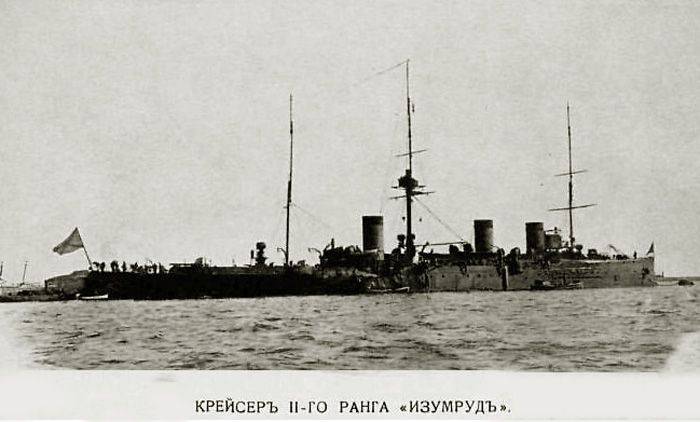
During the First World War, almost all the warring countries fought against the enemy’s radio communications. Moreover, at the beginning of the war, the work of radio equipment and interception of broadcasts was most developed. Radio interference with the aim of disrupting radio communications in armies of belligerent countries was created very rarely.
An important role in the surveillance of headquarters and troops was played by short-wave radio direction finders created by the Russian engineers N.D. during the first world war. Papaleksi and A.L. Mandelstam With the help of radio direction finders it became possible to determine the direction to the radiating radio stations and their locations. According to the number of working radio stations, conclusions were drawn about the areas where the headquarters and groups of enemy troops were located, about their changes and movements, and together with the interception of radiograms and the intentions of the troops, the directions of concentration of the main efforts. In 1915, the armies of almost all the belligerent states, including Russia, had special radio intelligence services equipped with radio interception and direction finding equipment.
After the revolution, the majority of Western states, especially Germany and England, tried, as VD recalled. Bonch-Bruyevich, “fight with our radiograms with our powerful stations, producing a scandal on the world air and drowning out our powerful radio voice with a cacophony of sounds interrupting our messages”. Therefore, it was decided to build in Moscow "a powerful radio station, the signal of which would be so strong that it could not be interrupted in neighboring countries, and such a station was built."
In subsequent years, before the Second World War, the development of methods of dealing with radio-electronic means proceeded along the line of enhancing radio intelligence, radio disinformation, radio-electronic suppression. Radio intelligence draws information only by intercepting radiograms and determining with the help of radio direction finders the locations of operating radio stations. Therefore, if you organize the transfer of false messages, you can misinform the enemy and force to action, beneficial to their troops. This is how the second element of electronic warfare appeared - radio disinformation.
In the Red Army, the issues of disinformation by means of radio-electronic means, great importance was attached, and in some cases it led to major operational successes. Marshal of the Soviet Union GK Zhukov recalled that in the battles at Khalkhin-Gol in 1939, the command of the Soviet troops considered the tactical surprise to be the decisive factor for the success of the offensive. “We knew that the Japanese were conducting radio intelligence and wiretapping of telephone conversations, and we developed a whole radio and telephone program for the purpose of misinformation. Negotiations were only about building defense and preparing it for the autumn-winter campaign. Radio deception was built primarily on a code that is easily decipherable. Further events confirmed that special measures of disinformation and disguise played a crucial role, and the enemy was really taken aback. ”
In the second world war, electronic warfare was further developed. She led the army of all the warring states. At the same time, all three components of electronic warfare were widely used on the fronts: radio and radio intelligence, radio misinformation and electronic suppression.
Radio-electronic suppression was the most important and effective part of the struggle, since only by creating special suppressive radiations of electromagnetic energy, a malfunction of radio-electronic systems and means was achieved. For the first time in history, all three methods of electronic warfare were comprehensively applied by the Soviet Army in the battle of Stalingrad. At the end of 1942, the troops of the Southwestern, Don, and Stalingrad fronts intensified radio intelligence. After encircling the 6-th German army, in order to suppress its radio communications, the command of the Stalingrad Front created a radio suppression group, which had several powerful radio stations. The 394-th separate radio division was involved in the reconnaissance of the radio assets of the encircled troops, the guidance of jamming stations on them, and the determination of the effectiveness of the suppression. At the same time, a special radio station was allocated to misinform the headquarters of the 6 Army, working as the call signs of the headquarters of the Manstein military group, trying to break through the encirclement. This radio station received especially important radiograms from the headquarters of the 6 Army 86. The suppression of the work of enemy radio stations was carried out by tuning our radio stations to the working waves of enemy stations and conducting "meaningless" transmissions during their periods of operation. The established control over the degree of suppression of radio communications, as well as the testimonies of captive generals and officers of the 6 Army, indicate the extremely high efficiency of the measures taken.
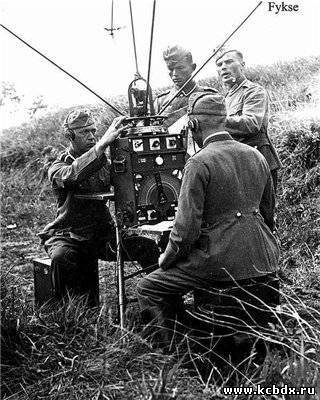
A qualitative leap in the development of radio-electronic suppression, the main method of dealing with enemy radio communications in the Soviet Army, occurred in the 1943 year, after the creation of special radio interference units. Immediately began to form two special purpose radio divisions - 131 and 132, and then 130 and 129. These were the first parts of electronic suppression. The creation of such parts was caused by the need to conduct a constant electronic warfare.
All radio parts took an active part in suppressing radio communication systems and enemy disinformation. The 131 radio division operated as part of the North-Western Front, and the 132 radio station was in the Voronezh and Central Fronts (1943); then these units were transferred to the 1-th Ukrainian and 3-th Belarusian Fronts. Other radio divisions (129-th and 130-th) were fighting in the 2-th Ukrainian, 1-th and 2-th Belarusian fronts. From 1943 to 1945, the radio divisions suppressed the radio communications of the German troops in the army - corps - division. At the same time, a particularly high efficiency of application of these parts was achieved when the radio communication of the surrounded groups was disturbed. Here, the radio divisions carried out a complete radio blockade of the enemy troops. For example, the 131 radio division in the Belarusian operation from 23 June to 31 in July 1944, while surrounding and destroying factions in the Vitebsk and south-east regions of Minsk, acted round-the-clock, disrupting the transfer of 522 urgent and 1665 simple enemy radiograms. Subsequently, the same radio division received the task of completely suppressing the radio communication of the surrounded Königsberg garrison, and most importantly - to deprive its command of communication with the Nazi headquarters. The division performed this task very successfully. The main radio station of the encircled garrison during the period of the assault of Koenigsberg during the day tried to switch to 43 different working frequencies, and all of them were suppressed; the radio communications of the corps and divisions of the defending troops were also completely suppressed. After that, the main radio station began to openly transmit the order of the commander of the garrison on the surrender of troops.
The 132 radio division also operated effectively. In March, 1945, the troops of the 1 of the Ukrainian Front, partly conducted military operations to destroy the surrounded garrisons in Glogau and Breslau. 132 radio division, dividing their forces and funds into two groups, successfully suppressed the radio communication of these garrisons. For fifteen days (from 5 to 20 in March of 1945) they broke off in the Glogau 358 broadcasts, in Breslau 735, and also prevented 2801 from trying to get in touch.
In addition to the special radio parts, during the war, the armed means of troops were often used to suppress enemy radio communications. So, in February, 1944, while being surrounded by Nazi troops in the Korsun-Shevchenko Operation, the 27 Army headquarters received intercepted radiograms exchanged by the commanders of the encircled troops and troops who were outside the ring of the encirclement. The command of the 27 Army decided during the night to prepare all the powerful military radio stations to suppress the radio communications of the encircled troops. With the beginning of the attack, the enemy was able to completely suppress his radio communication, which made it impossible for the surrounded group to coordinate actions to break through the ring of the environment.
In the course of the Great Patriotic War, the Soviet army found its further development in the fight against enemy radioelectronic systems, during which their reconnaissance, suppression of work with special radiations and disinformation were carried out. Moreover, for the disruption of radio communications, they were widely used both for the first time created for this purpose special units and military radio facilities.
The electronic warfare during the war was waged by the armed forces of England, the USA and Germany. After the defeat of Poland and France in the fall of 1939, the German command sent strikes to aviation to England.
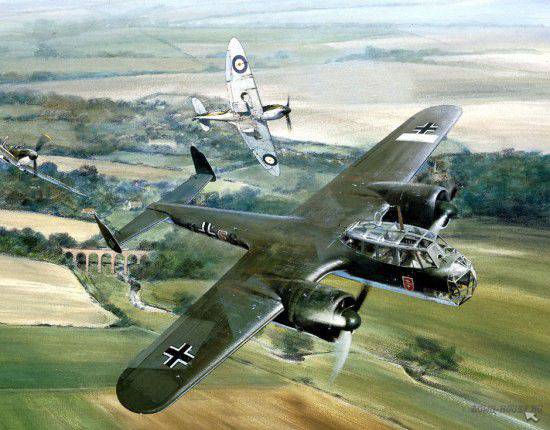
Bombing of cities and objects was carried out in any weather, day and night. Even dense English fogs, torrential rains and snowfall did not save air strikes. British intelligence soon found that during raids German bombers were aimed at targets with the help of special directional beacons (the Lorenz radio navigation system), which were located in France and Belgium. Having radio receivers with directional antennas on their sides, the bombers flew in the beams of these radio beacons to the target area and then bombed it.
British experts, in order to reduce the effectiveness of the actions of the German bomber aircraft, installed several more powerful beacons and directional radiation on their territory. When enemy planes approached the British Isles, depending on the work of one or another radio beacon of the German Air Force, one of the British beacons turned on with a stronger signal that drove bombers to false directions, away from the target, and forced them to drop bombs on empty spaces. At the same time, the crews were sure that they hit the targets exactly.
Subsequently, the Germans introduced a new radionavigation system consisting of radio beacons with two parallel rays. During its operation, points were continuously transmitted in one of the beams, and a dash in the other. The signals were synchronized so that during the flight of the bombers between the rays, the navigator in his radio receiver heard a continuous sound signal. Any deviation from the course immediately gave an advantage in the strength of the sound points or dashes. With this system, the British also organized a very effective fight. They intercepted the transmission of a single beam, for example, the first time of the transmitting point, the second time - a dash, amplified them and retransmitted. As a result, the bombers, in order to receive signals of the same power, had to move away from the previous direction of flight. In this way, the same “ray distortion” effect was achieved, the bombers again lost their course.
In 1940, residents of London, listening to radio broadcasts from occupied Paris, noticed that before each air raid on the city, the volume of radio broadcasts increased. The investigation showed that the volume outside the area subjected to the bombardment dropped sharply. Subsequently, it was established that before the raid of German aviation, the Paris radio station switched to a directional antenna, with energy being emitted towards the target. Above the target area, the beam of the Paris radio station intersected the beam of the navigation beacon of directional radiation, and thus the point of bombing was designated. As a countermeasure, the British retransmitted the amplified signals of Paris, which crossed the beam of the German radio navigation beacon over uninhabited territory or over the English Channel, again forcing aircraft to drop bombs on empty places. Ultimately, the “battle of the rays” won the British. They thwarted the plan of the fascist command with systematic bombardments to force England to surrender.
In the air defense systems (AD) of Germany and England, radar stations (RLS) were widely used. Initially, they were used only to detect aircraft and flight directions. Then they began to be used to control and guide fighter-interceptors and anti-aircraft artillery. With the help of the radar, continuous radar fields were created, which were impossible for the aircraft to pass unnoticed. To overcome the air defense system, first of all, it was necessary to suppress radar surveillance.
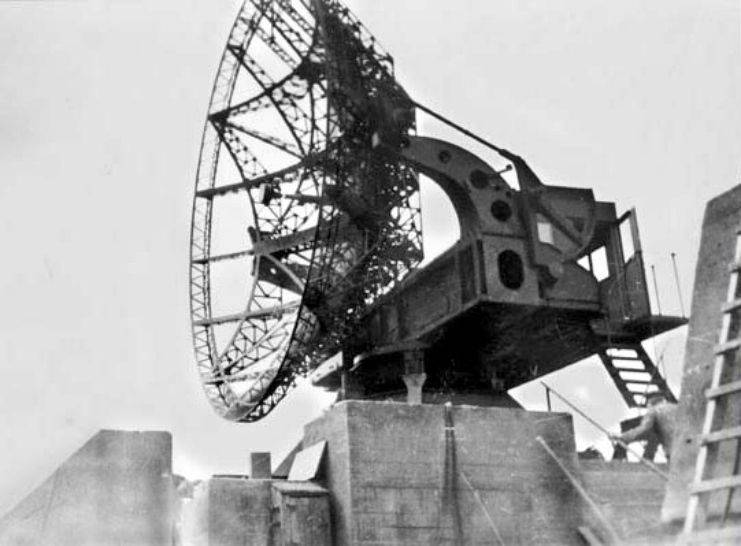
The British, organizing an air raid on Hamburg in the middle of July 1943, decided to discard thin strips of aluminum from special aircraft to disorganize the German air defense system. Moreover, the planes that dropped the strips flew not only to Hamburg, but, in order to deceive, and to other cities in Germany. The result exceeded all expectations. Instead of 790, the air defense radar systems of real aircraft flying to Hamburg detected thousands of bombers flying from several directions to various cities. This completely disorganized the air defense system and allowed the British, almost without loss, to make a raid.
In this case, strips of aluminum, being thrown out in large quantities (2,5 million packs of 2000 tapes each), reflected the signals of German radar stations and thus created a large number of marks on radar screens corresponding to marks from real planes. The radar operators had a full impression of the massive air raid on the whole of Germany.
However, the Germans did not remain in debt. Six weeks later, at the end of August 1943 of the year, they applied the same ribbons (by that time they were called dipole reflectors) during an air raid on one of the Anglo-American naval bases and achieved equally astounding results. Until the end of the war, the use of dipole reflectors by both sides was considered a common event, which was carried out to successfully overcome the radar detection of the sides' air defenses. During the Second World War, the Allies dropped over Germany over 20000 tons of aluminum foil. Subsequently, starting from 1944, special transmitters of interference to radar stations, which were installed on the sides of bomber aircraft and on escort aircraft, began to be used along with dipole reflectors. According to the American Air Force experts, the widespread use of dipole reflectors and jamming transmitters contributed to the maintenance of 500 American bombers and 5000 members of their crews in the XNUMX formation.
In general, according to foreign experts, as a result of the complex use of various electronic warfare systems, the effectiveness of the German air defenses decreased by about 75%, and the losses of Allied aviation during raids on Germany decreased about three times.
Electronic measures are widely used in the actions of the naval forces. One of these electronic warfare operations was carried out by the specialists of the fascist German Navy at the beginning of the 1942 of the year. Three large ships: the two battleships Scharnhorst and Gneisenau and the cruiser Prince Eugen were blocked by the British Navy in Brest Harbor (France). Due to the heavy losses of aviation from the German air defenses, the British were forced to abandon attempts to destroy the ships from the air. The British military leaders decided to rely on the superiority of the naval forces controlling the waters south and west of the harbor. The route to the English Channel was under the constant control of British coastal radar stations, which were supposed to notify their air force and navy if the German ships chose this route to break the blockade.
On the night of 11 February, 1942, under adverse weather conditions, the Germans, after careful reconnaissance of the British coastal radar, operated radar jamming stations along the French coast, gradually increasing the power of their signals using stations installed on small ships. The interference was applied so skillfully that the British came to the conclusion that their radar stations were in disrepair. While the operators and specialists of the British radar were looking for non-existent malfunctions, three German warships passed the English Channel and left for the North Sea.
In the course of the Second World War, the struggle in radio communications also began. In the early years, it was characterized by conducting reinforced intelligence behind it in order to reveal the location and intentions of the ground forces, naval and air forces of the parties. According to the press, a service “y” was created in England, which had a large number of radio interception stations and several radio-direction-finding networks. By the end of the war, the service consisted of 25 thousand people. The fascist German army also had a well-equipped radio intelligence system, which was able to intercept up to 100 thousand radiograms daily. Only for decryption and processing of radiograms in this service there was a management numbering about 3000 qualified translators, mathematicians, decryptors and philologists.
Since 1942, along with reconnaissance, the western belligerents have begun to use various methods of disinformation using radio means, and mainly radio stations operating under the guise of belonging to the enemy. The command of the German fascist air forces, having been defeated in the “battle of the rays,” began sending special air-gunners to the bombed areas, which, with the help of radio stations, directed planes to ground targets. Then the British introduced into the crews of the German-speaking radio operator airplanes on duty in the air. Imitating the German aircraft manufacturers, they informed the bombers of the false areas for bombing, and during the raids of their aircraft on Germany, they drove German interceptors away from their bombers. The Germans, as countermeasures, appointed women aircraft builders, the British immediately followed suit.
Most fully, with the involvement of all the available forces, means and methods, electronic warfare activities were carried out during the landing of the Anglo-American troops in France, in June 1944. It should be noted that for the purpose of misinforming the German command throughout the 1943, the British broadcasts on the radio, which reported on the impending landing of troops in the north, in the center and in the south of France.
The landing of the main allied forces, as is known, began on the morning of June 6, 1944 in Normandy, near the mouth of the Seine, while a demonstrative landing was moving north to the area of Calais and Boulogne, where the German coastal radars were most densely mounted. This landing was made up of hundreds of small vessels, some of which towed barrage balloons painted with aluminum paint, and some were large corner reflectors. All these designs were perceived on the screens of German radars as large warships and transports. The German command, believing in the truth of the distraction, sent troops to the Calais region from the interior of France, including one tank division, and did not strengthen the defense of the real landing area.
To disguise the movement of this landing, the Anglo-American command applied the 262 radar interference transmitter, setting them on ships of various classes and on airplanes. Passive means in the form of reflectors used by more than a hundred ships. The activities carried out ensured the landing craft a safe passage through the English Channel. More than 2000 ships participated in it, but less than 10 was lost. After the activities of electronic warfare during the landing of troops in France, the Anglo-American command until the end of the war did not hold any noticeable new actions in this direction.
Thus, during the Second World War, the electronic warfare gained its further development and improvement. The scale of the use of electronic suppression devices has increased, special units (divisions) began to be created, the tactics of their use began to be developed; the struggle covered not only radio communications, but also radiolocation and radio navigation.
In the postwar period, many local wars and armed conflicts were unleashed. Experience has shown that electronic warfare equipment was used in each of them. They were used to solve not only strategic, but also operational tactical tasks.
At the same time, in the armed forces of all technically developed countries, the fourth element of electronic warfare began to be worked out - the protection of the electronic means of its troops from reconnaissance and suppression by the enemy. Currently, electronic warfare is in a new phase of its rapid development. As events have shown, not a single battle, not a single operation of any kind of armed forces begins and is not conducted without a wide use of forces and means of electronic warfare.
Sources:
Boltunov M. “Golden ear” military intelligence. M .: Veche, 2011. C.66-71, 88-102, 114-117.
Paliy A. Radio-electronic warfare in wars and armed conflicts. M .: VAGSh, 2007, S. 64-72.
Paliy A. Radio-electronic warfare during the war // Military-Historical Journal. 1976. No.5. C. 10-16.
Grankin V., Zmievsky V. From the history of EW. // Military History Journal. 1976. No.3. C. 82-87.
Gordienko V. Century of electronic warfare // Independent Military Review. 11 April 2003
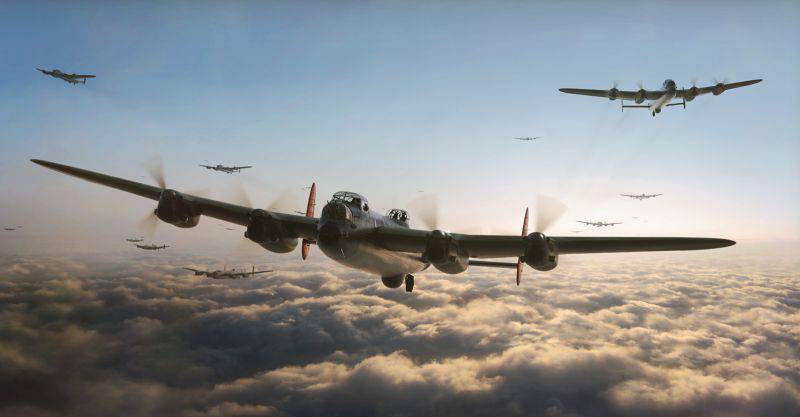
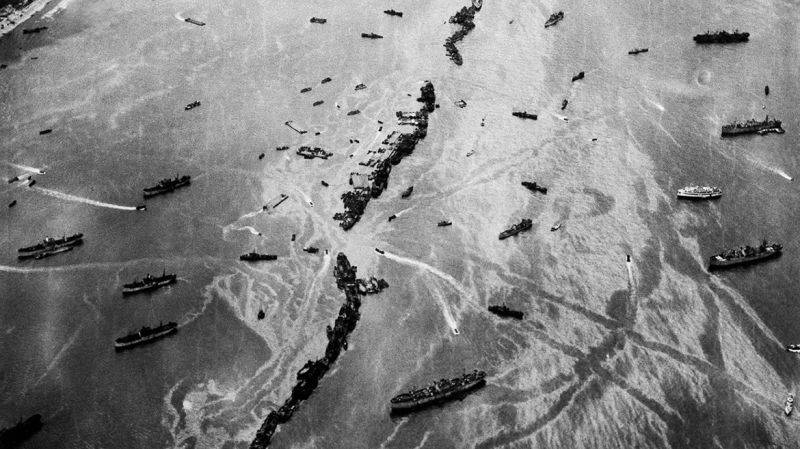
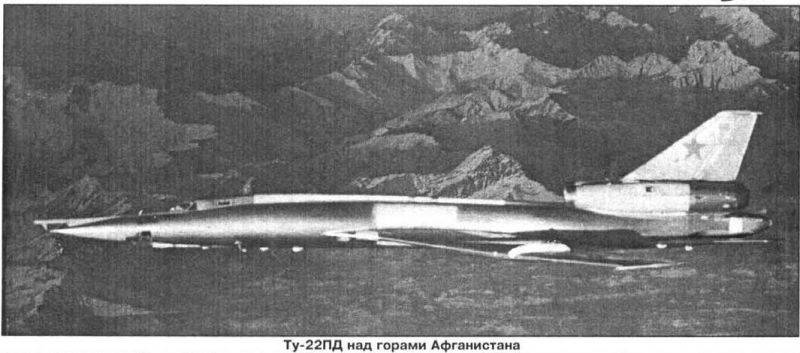
Information